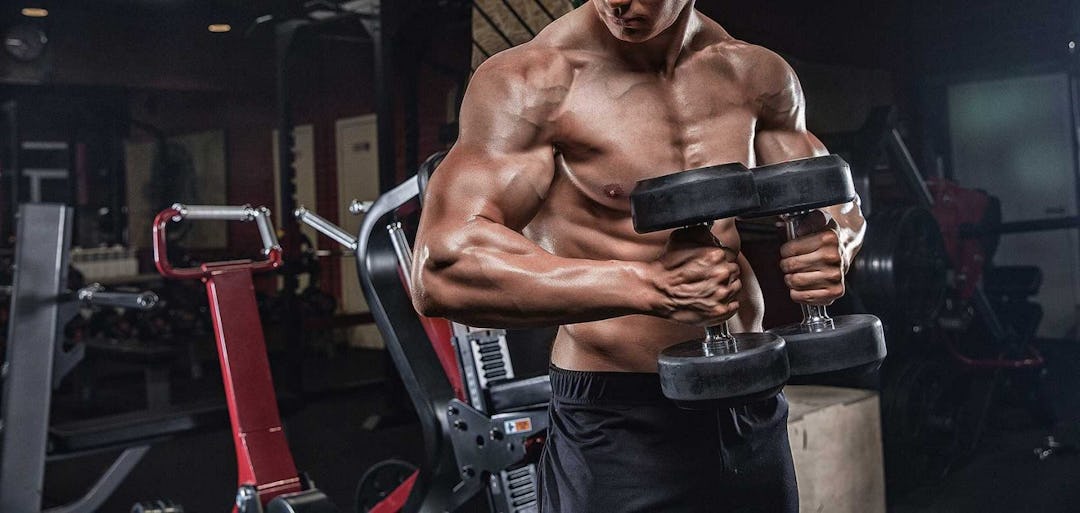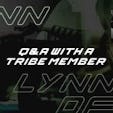Gym wisdom suggests that building a big chest is all about slapping as much weight as you can find on a barbell and bench-pressing it till you’re blue in the face.
But if benching hurts your shoulders, you train at home without a trusty spotter, or you’ve found that barbell training just doesn’t give you a bigger chest, dumbbell work is the answer. In this article, we will guide you through some of the best dumbbell chest exercises and chest workouts with dumbbells.
Key Takeaways
1. Dumbbell chest exercises are vital for building a strong chest, especially if barbell training causes shoulder discomfort, or you train without a spotter.
2. Dumbbell workouts offer a greater stability challenge and balanced muscle development compared to barbells, reducing the risk of joint stress and injury.
3. Dumbbells allow for a wider range of motion, maximizing muscle activation and promoting muscle growth.
4. Dumbbell training enables customization of exercises to fit individual body mechanics, enhancing effectiveness and safety during workouts.
How To Build Your Chest Muscles With Dumbbell Exercises
Dumbbell training may not be as sexy as loading up the bar till it bends, but for most people, it’s actually a better road to a bigger, stronger, set of pecs, and offers less risk of injury to boot. In this comparison article, barbells vs dumbbells, we’ve explained the major differences between working out with both.
Now, we’re about to show you our recommended top 6 best dumbbell exercises and 3 workouts to develop your chest, top to bottom.
What Are The Most Effective Dumbbell Chest Exercises You Can Do?
Any chest move that you can do with a barbell can be replicated with dumbbells. Here are our favorites—many of them classic moves you’re probably already familiar with, but with a clever twist that elicits even greater gains—courtesy of Dr. John Rusin, a strength and conditioning coach and author of Functional Hypertrophy Training (available at drjohnrusin.com). We categorized them by the area of the chest they emphasize most.
Exercises for Upper Chest with Dumbbells:
#1 Slight Incline Dumbbell Bench Press
(See the video above at 00:31)
Step 1: Elevate one end of a flat exercise bench on two or three heavy barbell plates, or a small box or step. The angle should ideally be 30 degrees or less.
Step 2: Lie back on the bench, your head at the elevated end, holding two dumbbells at arm’s length above your chest.
Step 3: Slowly bend your elbows and pull your shoulder blades together on the bench, lowering the dumbbells until they are close to the sides of your chest. In the down position, your elbows should be at a 45-degree angle to your torso—not straight out to the sides.
Step 4: Pause in the stretched position, and then press the dumbbells back up, flexing your chest as you push.
Standard incline bench presses put your hips in a flexed—or bent—position, says Rusin. This basically takes your entire lower body out of the exercise, which isn’t always what you want. By elevating the bench just a little bit, you can incorporate leg drive into the movement in the same way you do (or should) perform a flat barbell bench press. This effectively turns the move into a full-body exercise, which will allow you to handle more weight.
The incline also works the pec fibers that attach to the clavicle more strongly.
#2 Incline Fly-Press
(See the video at 01:20)

Step 1: Elevate one end of a flat exercise bench on two or three heavy barbell plates (the same as you did for incline press described above).
Step 2: Lie back on the bench with your head at the elevated end, holding two medium-heavy dumbbells at arm’s length above your chest, palms facing inward.
Step 3: Slowly lower the dumbbells directly out to the sides, simultaneously bending your elbows and squeezing your shoulder blades together until your chest is comfortably stretched and your elbows are at about a 90-degree angle. (If you experience shoulder pain in the fully stretched position, limit the range of motion).
Step 4: Reverse the movement, contracting your pecs as you straighten your arms fully, until you are back in the starting position.
Standard flyes are great for building muscle—but brutal on the shoulders. Bend the arms as you lower the weights, explains Rusin, and you maintain the stress on the pecs while taking it off the shoulder joints. Learn more effective exercises tailored to the upper pecs with our upper chest workout article.
Middle and Inner-Chest Exercises with Dumbbells:
#3 Crush Press (aka Squeeze Press)
(See the video at 01:55)
.webp)
Step 1: Lie back on a flat exercise bench holding two heavy dumbbells on your chest, palms facing one another.
Step 2: Press the dumbbells together in the center of your chest (this is your starting position).
Step 3: Keeping the dumbbells pressed together, slowly push them to arm’s length over your chest. Pause for a moment, squeezing your chest muscles.
Step 4: Slowly reverse the movement, returning to the starting position.
Crush presses force the pecs to contract hard in a shortened position. This makes for a good contrast to flyes and dumbbell pressing movements—where the weights lower past your chest, emphasizing a stretch on the muscles. Squeeze hard at the top on crush presses and you’ll get a similar effect to cable crossovers, without needing two fancy cable stations to do it.
For an even better contraction, attach bands to the dumbbells so they’re pulling the weights away from each other when you do the exercise. You’ll have to work much harder to maintain the squeeze. The crush press with dumbbells is one of the most effective exercises for targeting the inner chest during a workout with dumbbells. Explore other inner-chest training options with our comprehensive guide in this inner chest workout article.
#4 Fly-Press
(See the video at 02:39)

Step 1: Lie back on an exercise bench holding two dumbbells at arm’s length above your chest, palms facing inward. This is your starting position.
Step 2: Slowly lower the dumbbells directly out to the sides, simultaneously bending your elbows and squeezing your shoulder blades together, until your chest is comfortably stretched and your elbows are at about a 90-degree angle. (If you experience shoulder pain in the fully stretched position, limit the range of motion).
Step 3: Reverse the movement, contracting your pecs as you straighten your arms fully, until you are back in the starting position.
Flyes take the triceps virtually out of the equation, largely isolating the pecs and working them hardest in the fully stretched position—where the maximum amount of muscle fibers can be recruited.
Lower-Chest Dumbbell Exercises:
#5 45-Degree Dumbbell Floor Press
(See the video at 03:16)

Step 1: Lie on your back on the floor, holding two dumbbells at arm’s length over your chest. You can either lie back from a sitting position while holding the dumbbells, or have a partner hand them to you.
Step 2: Rotate your wrists so that the thumb sides of your hands are closer together than the pinky sides (as if holding a steering wheel at 10 and two o’clock). This is your starting position.
Step 3: Slowly lower the weights, keeping your elbows close to your sides, until your triceps lightly contact the floor.
Step 4: Press the weights back to the starting position.
The floor press works similarly to the crush press, working the pecs when they’re in a shortened position. Because the range of motion is abbreviated, resulting in little stretch on the shoulders, they’re a good option for people with shoulder pain.
#6 Feet-Up Slight Decline Dumbbell Bench Press
(See the video at 03:56)

Step 1: Elevate one end of a flat exercise bench on two or three heavy barbell plates.
Step 2: Lie back on the bench, your head at the lower end, holding two heavy dumbbells at arm’s length above your chest. Place your feet flat on the bench.
Step 3: Slowly bend your elbows and pull your shoulder blades together on the bench, lowering the dumbbells until they are close to the sides of your chest.
Step 4: Pause in the stretched position, and then press the dumbbells back to the starting position.
The slight decline works the pecs with the shoulders in a centrated—or neutral—position. This balanced position permits maximal drive from your muscles, while the decline angle recruits more of the muscle fibers that connect to the sternum (targeting the lower chest). Want to load up on a chest exercise? Choose this one. It’s safer than doing flat or incline presses with heavy weight.
What Is The Best Dumbbell Chest Workout?
If you’re ready to build some serious pressing strength and size in your chest, try one of the suggested workouts below. Each is designed to suit a specific goal and experience level. If you are looking to build up your arms and chest in the same session, make sure to check out our article chest and tricep workout.
Dumbbell Chest Workout For Beginners
If you’re fairly new to the iron game and are looking for some basic dumbbell chest exercise, start with this simple, two-move chest workout with dumbbells. You can do it as part of a full-body workout or upper-body day. On the pushup, perform each rep at a deliberate pace, stopping before you reach failure on your first set. On the final effort, get as many reps as you can. Then hit the second move, leaving a couple of reps in the tank on all your sets. Perform this workout up to three times a week on nonconsecutive days.
1. Pushup
Sets: 2 Reps: Stop two reps shy of failure on the first set; last set, as many reps as possible
Step 1: Place your hands on the floor, or on a stable elevated surface (a bench, box, or table work well—the higher the surface the easier the exercise). Set them slightly wider than shoulder width and do the same with your feet. Your arms should be locked out and your body straight from your heels to the top of your head. Tuck your tailbone under, brace your core, and squeeze your glutes, so your pelvis is perpendicular to the floor.
Step 2: Keeping your body straight and your head in a neutral position, simultaneously bend your arms and retract your shoulder blades until your chest is just above the floor—or as far as you can go without losing good form.
Step 3: Press back up, spreading your shoulder blades at the top of the movement. (Think of yourself as pushing through the floor.)
2. Incline Fly-Press
Sets: 2–3 Reps: 12–15
See the directions above.
Dumbbell Chest Workout For Intermediates
If you’ve been hitting the weights consistently for at least six months, this trifecta of pec punishers will nudge you up another level. Use it in place of the chest day you were doing, or add it to your program for extra work (spaced out a few days from any other chest work you do). Rest about 2 minutes between sets of the first move, 60 seconds between sets of the second, and 30–45 seconds between sets of the third. On each exercise, choose weights that allow you to complete the lowest number of reps listed. Over time, work up to completing the highest number of reps listed for every set before increasing the weight. Perform this chest dumbbell workout twice a week on nonconsecutive days.
1. Slight-Incline Dumbbell Press
Sets: 4–5 Reps: 4–6
See the directions above.
2. Press-Fly
Sets: 2–3 Reps: 8–12
See the directions above.
3. 45-Degree Dumbbell Floor Press
Sets: 1–2 Reps: 15–20
See the directions above. This exercise is easily performed in the comfort of your home, and you can discover more home-suitable exercises by reading our article about chest workouts at home.
Advanced Dumbbell Chest Workout
Ready to sear your chest? This workout will do it. Use it in place of your current chest day and limit any other chest training you do in the same week to ensure recovery. Load up on the decline presses—they’re a serious strength builder—and use progressively lighter weights as the workout goes on and fatigue sets in. Finish with two sets of old-fashioned pushups, which will feel shockingly difficult after the other moves.
1. Feet Up, Slight-Decline Dumbbell Bench Press
Sets: 4-5 Reps: 3–5
See the directions above.
2. Incline Fly-Press Hybrid
Sets: 3–4 Reps: 6–10
See the directions above.
3. Crush Press
Sets: 2–3 Reps: 12–15
See the directions above.
4. Pushup
Sets: 2 Reps: As many reps as possible
See the directions above. If you can do more than 20 reps, wrap an elastic exercise band around your back and grasp an end in each hand for extra resistance.
If you want info on how to maximize gains with the crush press, check out our article on the dumbbell hex press exercise (the same movement by a different name).
How To Stretch Before A Dumbbell Chest Workout?
We know you’re anxious to get to the gym and start trying all these moves out… but before you start training your pecs, please make sure to warm up your chest, shoulders, and elbows. These chest warm up exercises from Onnit’s former Chief Fitness Officer, John Wolf, will help you prepare properly for the chest workouts that follow. (See the video above.)
What Are The Benefits of Working Out My Chest With Dumbbells?
“The second you put two weights into your hands, it becomes doubly hard to stabilize them,” says Dr. John Rusin, a strength and conditioning coach and author of Functional Hypertrophy Training (available at drjohnrusin.com). That’s a good thing, he says: the smaller muscles in your shoulder joints learn to stabilize those joints, while the big muscles (the pecs, mainly) work harder to control the weights, preventing them from drifting in all directions. Dumbbell training offers the following benefits for chest gains.
#1. Dumbbells Allow a Greater Range of Motion
When you perform bench presses with a barbell, the bar hits your chest before your pectoral muscles achieve a full stretch. That’s not so bad if your goal is to press the biggest weight you can. But if you want to gain size and athletic performance, you may be better off with dumbbells, which allow you to lower the weights past chest level—maximally stretching the pecs and activating more muscle fibers. A study from the Journal of Strength and Conditioning Research suggests that larger ranges of motion lead to more muscle growth.
#2. Dumbbells Build More Stability
Yes, they’re harder to control than a barbell or machine handle, but that’s kind of the point. Your arms may shake a bit when you’re doing a dumbbell bench press or flye for the first time, or the first time in a long time, but that’s because your muscles are learning to stabilize your shoulder joints while they’re producing force. This is helpful for making you functionally stronger in the long run, so your muscles can produce force under various conditions—not just when the object they’re pushing against is perfectly balanced or moving in a straight line.
#3. Dumbbells Place Less Stress on Your Joints.
Funny thing about the human body: it only looks symmetrical. In fact, your shoulders, hips, wrists and other joints are all slightly different from one side to the other. So, when you force the body to move with perfect symmetry—as when you lower an evenly-weighted bar directly to the middle of your chest—one side will always take on a little more of the stress than the other. Do this often enough, and the joints on that side will start to complain.
Dumbbells allow both sides of your body to find their optimal path when performing an exercise. Your wrists are free to rotate, and your elbows and shoulders can travel along the path that’s most comfortable for them, essentially customizing the exercise for your body. That places the stress of the exercise right where it belongs—in your muscles, and not your joints.
#4. Dumbbells Give you Balanced Development and Strength.
This builds on our last point. You may feel like your right and left arm push with equal force on the barbell bench press, but humans are very good at compensating—throwing a little more stress onto their stronger side while favoring their weaker one. That’s not possible with dumbbells: your right and left sides have to stabilize and push with equal force—and if one side lags behind, you feel it immediately. This ensures that you never push a set farther than your weaker side can handle. Eventually, the strength on your two sides should roughly even out. And if you need extra work to bring up the weaker side, dumbbells make doing a few more reps or sets with it simple to do.
#5. Dumbbells Work the Pecs Harder.
Bench-press a pair of dumbbells and you’ll feel that the chest muscles have to contract at the top of the movement to prevent the weights from drifting outward. That’s not something you need to worry about when your hands are connected by a steel bar. A 2017 study found that dumbbell bench presses activate the pectoralis major—the impressive slab that makes up most of the chest musculature—more effectively than both the barbell bench press and the Smith machine bench press.
#6. Dumbbells Are Safer
We all know somebody who’s gotten trapped under a barbell when he couldn’t press it back up (you probably see him in the mirror every day). When you train at home, alone, such accidents can be extremely dangerous, so dumbbells are the better equipment choice for solo chest training. If your muscles give out sooner than you expect, you can easily drop the weights to the floor and live to lift another day.
What Kind of Dumbbells Should I Buy?
If you’re tired of schlepping to the gym and are ready to build a weight room of your own at home, dumbbells should be one of your first buys. You basically have two choices in the dumbbell market:
1) Adjustable dumbbells. Plates can be added and held on with collars, or the turn of a dial or lever.
2) Fixed dumbbells. The weight is secured to the handle. This means you’ll need multiple pairs of dumbbells to cover an array of weight increments.
While fixed-weight dumbbells are inexpensive, indestructible, and have a nice old-school vibe to them (your grandfather probably had a pair), they’re not all that practical. If you work out at home, you’ll need at least three pairs (something that feels light, medium, and heavy) right off the bat, plus new ones whenever you get too strong for the old models. Over time, you’ll be tripping over dumbbells, and wondering why you didn’t shell out a little more for the adjustable type up front.
But, if you like the real-gym feel of one-piece dumbbells, and money and space are no object, it’s hard to beat CAP Barbell Rubber-Coated Hex Dumbbells, which feel great in your hands and won’t nick up your flooring if you drop them. You’ll pay about 25 bucks for a pair of 10-pounders, 60 bucks for two 25-pounders, and 110 for a pair of 45s.
With adjustable dumbbells, you’ll save money in the long run, and space right away. PowerBlocks ($160 per bell for the Elite model, adjustable from 5–50 pounds in 2.5 or 5-pound increments)—are industry standard, and easy to use after some practice shifting the weight around. Known as selectorized dumbbells, the handles sit in the center of square-shaped plates, and you can load and unload them quickly with the flip of a lever. Try a pair before you buy though, as some people find the handgrips a little awkward.
Another adjustable option is Bowflex Selectech Dumbbells, which range in weight from 5 to 52 pounds in 2.5 or 5–pound increments. They work similarly to the PowerBlocks and they’re about as pricy (you’ll pay around 300 dollars for a pair), but are a little easier to use and feel better in your hands.
If you’re after a classic strongman feel, and don’t feel like plopping down three bills for hand weights, you can’t beat a pair of York Fitness Cast Iron Dumbbells. You load and unload plates with these guys like they were mini-barbells, spinning the collars into place around the ends of the threaded bars. Not as convenient as the other adjustable options, but at about $120.00 for a 5 to 45-pound pair, they’re way less expensive.
One other thing about adjustable dumbbells vs. fixed: sometimes it pays to get both. Most selectorized sets only go up to around 50 pounds, and ones that do offer more weight tend to be long and bulky and cumbersome to use. To economize space as well as cash, it’s a good idea to get a selectorized set that goes up to 50 pounds, and then fixed-weight dumbbells for every increment you need beyond that.




)





